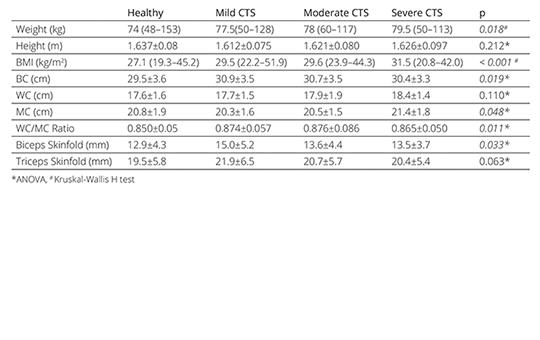The eLitMed.hu medical portal uses computer cookies for convenient operation. Detailed information can be found in the Cookie-policy.
Specialities
Neurology
[Significance and diagnosis of diabetic neuropathy in clinical practice]
[Diabetic neuropathy is an early detectable microvascular complication of diabetes. Most often, we can recognize it by its symptoms of distal-type symmetric polyneuropathy, further the damage to the autonomic nervous system is increasing the cardiovascular mortality. Screening for diabetic neuropathy is essential in clinical practice, since the signs of nerve damage related to diabetes can be detected at an early stage and open the way to therapeutic interventions. Proper diagnosis and continuous monitoring of diabetic neuropathy is also important during the patient care. This summary concerns the importance and diagnostic options of diabetic neuropathy for clinical practice.]
[Women and migrain ]
[Migraine is a headache disorder affecting 14% of general population, being even more prevalent (20%) among women in the 20–64 age group, who are actively working and are mainly at reproductive age. 18–25% of migrainous women have an attack related to menstrual cycle, 7% of them having an attack only at this period. Fluctuation of estrogen level may be responsible for these attacks, we can use NSAIDs, slowly acting triptans or progestin-only treatment as short-term prophylaxis. Hormonal contraception is not contraindicated in migraine. Combined (estrogen+progestin) treatment is proposed only in migraine without aura, but in case of more frequent and/or severe attacks or the appearence of an aura treatment should be stopped. In migraineurs with elevated risk of stroke combined hormonal contraception should be used with caution. In migraine with aura patients progestin-only contraception is possible. During pregnancy in 55–91% of migraineus women attacks disappear or are less severe. In most cases migraine with aura attacks occur during this period. Non-pharmacological treatments should be considered as first in the treatment off attacks, with consideration of risk/benefit ratio paracetamol, metamizol or triptans may be used. With the menopause in 2/3 of patients migraine gets better but because of the fluctuation of hormon levels it can be worse than before. Hormonal replacement therapy is not contraindicated in migrainous women but it can result in worsening of migraine. ]
[Blooming again – women’s life paths after brain injury ]
[After a serious brain injury or trauma, there is damaged the functional capacity of the affected persons and their self-image too. Traditional rehabilitation pays little attention to the female patients’ lost femininity. The aim of this study was to present the way of supporting women to realize again their femininity psychologically and physically alike after a brain injury.
In the Brain Injury Rehabilitation Unit of the National Institute for Medical Rehabilitation, the authors completed the female patients’ rehabilitation with special group sessions once a week. The topics were tailored to the needs of participants. There were targeted two specific objectives: achieving to perceive femininity in an autonomous way and regaining the feeling of femininity in the changed life circumstances due to the injury.
Occupational therapist, physiotherapists and nurses provided service to develop functional abilities. A psychologist helped the participants in trauma processing. Since the beginning in January 2022, two therapy cycles have been completed so far, each of which with 10-12 sessions. A total of 31 female patients and 8 supporting team members participated in these two groups so far.
Personalised rehabilitation was adjusted to the involved persons’ life circumstances, individuality, personality, family and social relations. Our experimental female group helped the participants to experience their femininity physically, mentally and psychologically too, according to their feedback.]
[Introduction of artificial intelligence based national decision support system to improve stroke care in Hungary ]
[Indication for recanalization therapy of acute ischemic stroke is based on imaging procedures. In order to minimize the time loss passing by recognizing the condition and the transfer of images to other facility, we established a stroke imaging network (eStroke network) supported by Artificial Intelligence (AI) in Hungary. Our study aims to present this system.
Organized by the National Institute of Mental Health, Neurology, and Neurosurgery (NIMNN), we included a total of 28 stroke centers, among them 4 thrombectomy centers. An earlier network of the University of Pécs and the widened network parallel with the NIMNN project cover 10 centers thus the service is now available in 38 stroke centers of this country. Stroke CT scans are automatically transmitted via the central teleradiology server to a central image processing server which analyzes the size of the ischemic area (ASPECT score), detects large vessel occlusion and it’s localization, analyzes the quality of collateral circulation and standard CT perfusion parameters using an AI based software (eStroke, Brainomix Ltd.). Results and processed images are sent automatically back to the PACS system of the sending institution and that of the concerning thrombectomy center and become available in anonymous form via cloud by desktop computers or mobile application.
During the first year of operation, the system has processed 38,060 scans of 16,276 patients. In NIMNN experience by samples of 65 and 152 cases, for drip and ship patients the time from the first alerting of the ambulance service, until arrival at the thrombectomy center was reduced by 38 minutes from 4:18 to 3:40 minutes.
Building an AI based central stroke imaging network for improving of stroke care’s results is technically feasible. Operation of the eStroke system is capable of reducing patient transportation times, however, further optimization is needed. ]
[Association of upper extremity anthropometry and subcutaneus adipose tissue with carpal tunnel syndrome]
[Body mass index (BMI) is positively correlated with the frequency of carpal tunnel syndrome (CTS). However, there are different types of obesity, and the localization of adipose tissue differs between the genders. In this study, we purposed to investigate whether there was an association between the amount of local adipose tissue thickness and anthropometry in upper extremity with the presence and/or electrophysiological severity of CTS on both genders. ]
Comparison of pre-mortem 2D-3D ultrasound examination to post-mortem micro-CT of carotid arteries – first experiences
A prerequisite for the treatment of carotid atherosclerosis is the accurate measurement of the stenosis, that is most commonly evaluated by duplex ultrasonography. In this study, we aimed to verify the reliability of 2D and 3D ultrasonography, comparing the data to results of post-mortem micro-CT examination. Neurological patients with any life-threatening, presumably fatal neurological disease were enrolled.
1.
Clinical Neuroscience
[Headache registry in Szeged: Experiences regarding to migraine patients]2.
Clinical Neuroscience
[The new target population of stroke awareness campaign: Kindergarten students ]3.
Clinical Neuroscience
Is there any difference in mortality rates of atrial fibrillation detected before or after ischemic stroke?4.
Clinical Neuroscience
Factors influencing the level of stigma in Parkinson’s disease in western Turkey5.
Clinical Neuroscience
[The effects of demographic and clinical factors on the severity of poststroke aphasia]1.
2.
Clinical Oncology
[Pancreatic cancer: ESMO Clinical Practice Guideline for diagnosis, treatment and follow-up]3.
Clinical Oncology
[Pharmacovigilance landscape – Lessons from the past and opportunities for future]4.
5.








